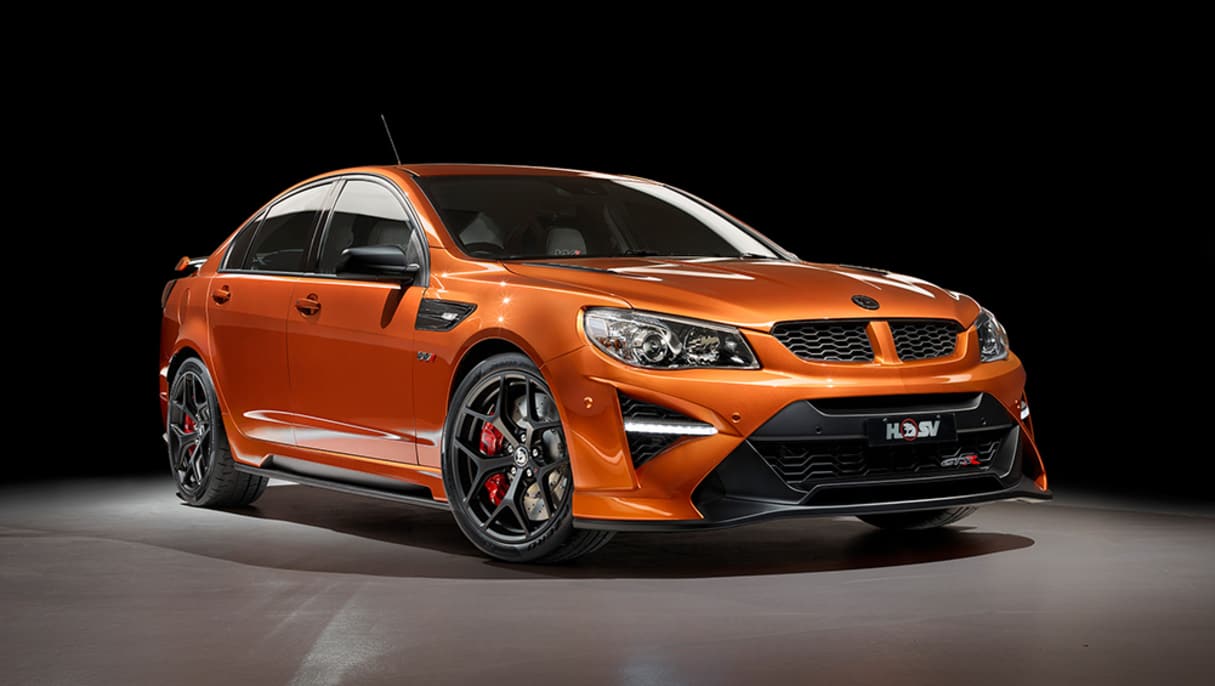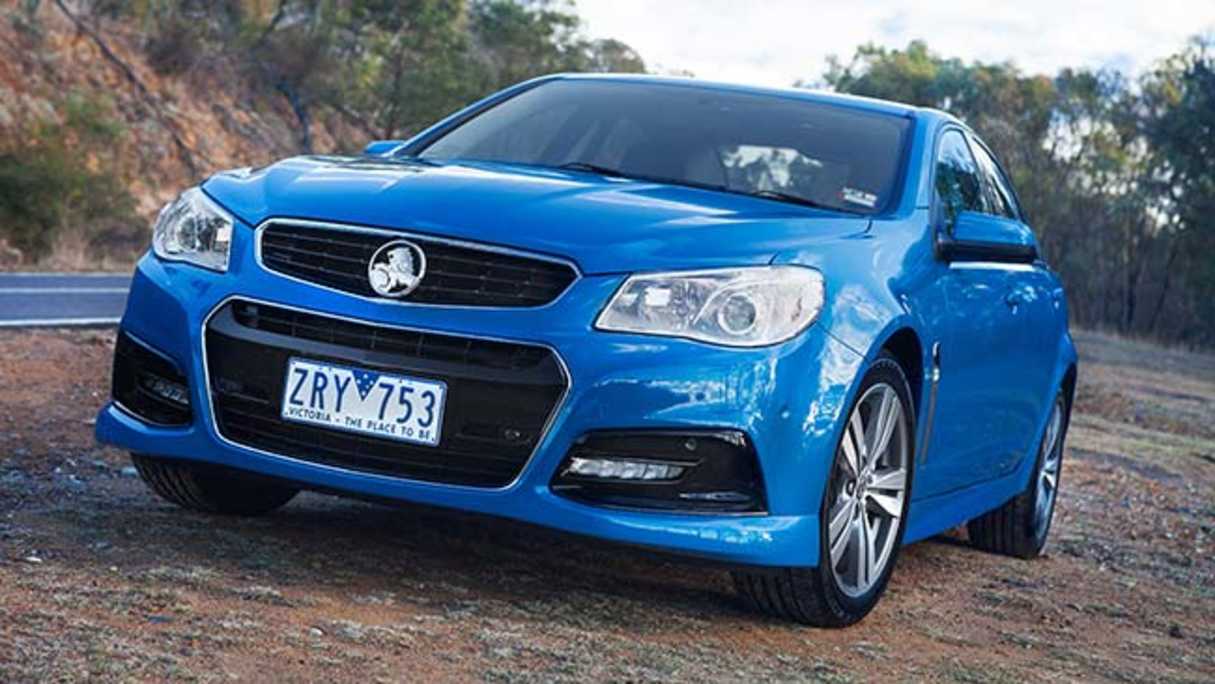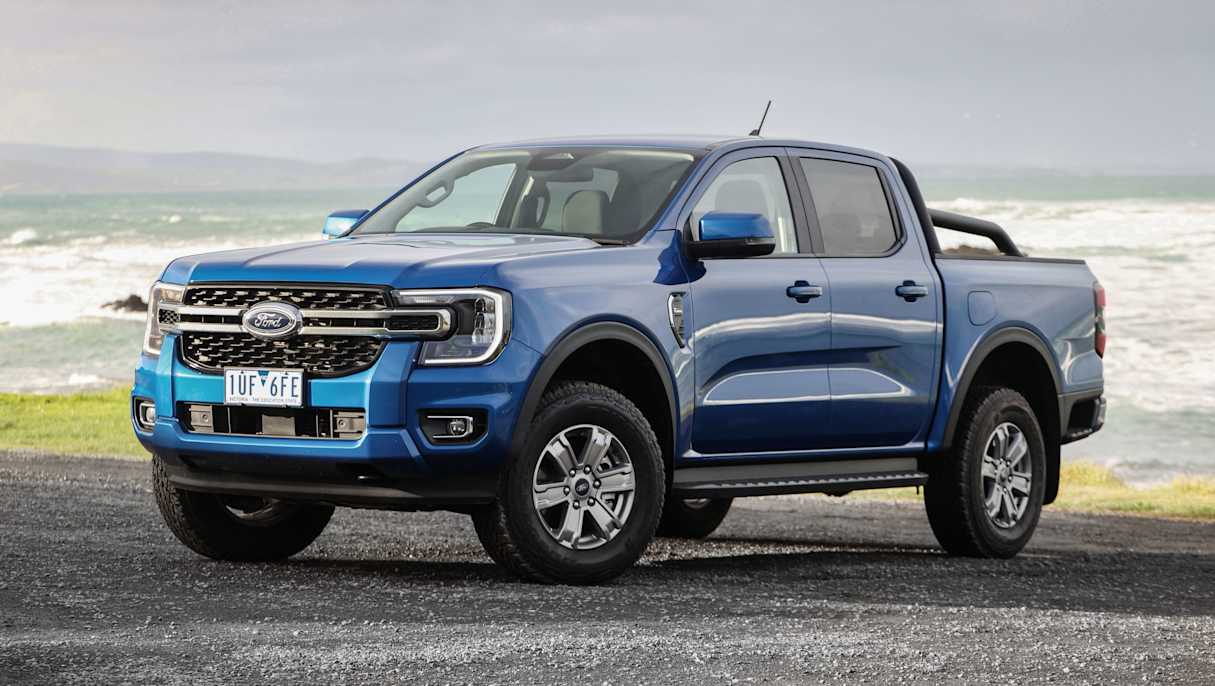On paper, the Ford T6 Ranger and Holden VE/VF Commodore are two very different vehicles, devised and developed during different decades and with little in common on the surface, especially when comparing their shapes, sizes and body construction.
Yet you don’t even have to dig that deep to realise that they also share some profoundly unique similarities, so much so in fact that future historians may use them to understand why they resonate so much with so many.
Here, then are the ties that bind Ranger and Commodore together. Note we mean the Australian-made Commodore and not the imported Opel Insignia-based ZB from 2018-2020.
Aussie engineered and designed
.jpg)
Famously promoted as “The Billion Dollar Baby”, the VE Commodore of 2006 reflected the largest and most ambitious investment ever in an Australian passenger car program.
It included an all-new architecture (Zeta) developed locally that was to underpin scores of other cars, utes, SUVs and coupes around the General Motors world, built both here for export as VE-derived models, and overseas as well, taking in Chevrolet, Pontiac, Buick, Opel, Vauxhall, Saab, Daewoo and other associated brands.
What happened? Rocketing oil prices, freefalling sedan sales as SUVs started to take over, the looming Global Financial Crisis and GM’s 2009 bankruptcy ended most projects and reduced the 2013 VF re-body to a minor restyle. Ironically, one prominent casualty was a Ford Territory SUV rival believed to have been badged the Holden Nullarbor. If only that had made it to market sooner.
Ford Australia, too, was developing an all-new global platform in the mid-2000s, to underpin future Falcon and Territory models into the next decade and beyond, along with a host of North American large cars and SUVs as well as the Mustang.

However, Detroit pulled the plug on the project quite early on, instead allocating resources to an Australian-designed and engineered medium-sized pick-up that, of course, became the T6 Ranger and Mazda BT-50 in 2011.
Or, in other words, Falcon/Territory knowhow that was to take on the VE/Zeta vehicles instead shifted to create the Ranger. And Everest. And, later, Bronco, VW Amarok II and other models, some of which we’ve yet to see.
Which, in hindsight, proved to be the correct decision, saving Ford Australia, since the T6’s unprecedented worldwide success makes it the most-globally available Ford today. GM, on the other hand, killed Holden.
Ford Ranger and Holden Commodore share personnel and suppliers

Diehard fans may think it sacrilegious, but in reality, people regularly jump brands once their contracts end. Engineers. Designers. Marketers. Whomever.
In the case of the latest T6.2 Ranger and its burgeoning offshoots, there are ex-Holden staff working behind the scenes aplenty – many from the VE/VF days – who helped make the latest version a world-beating ute, made available after their GM tenures dried up.
Similarly, both Ranger and Commodore share many parts from the same suppliers, just as their Falcon and Holden predecessors had since the 1950s. Several have flourished in the wake of the Ranger’s global success as well, even though it isn’t built in Australia.
Both appeal to the same demographic
.jpg)
In 1951, Holden released the 50-2106, beginning a line of large-car-based utes that – except between the final WB derived model in 1985 and the launch of the VG Commodore ute in 1990 – continued until all Holden production ceased in 2017. Ford Australia responded to the 'FX' ute with both the Zephyr and later Falcon alternatives over a similar timeframe.
Almost overnight, utes became part of the social fabric of Australia, attracting buyers seeking a weekday workhorse and weekend recreation machine. This phenomenon has since transferred to the Ranger, particularly the successful Wildtrak and flagship Raptor grades, especially as there are no Holden alternatives.
.png)
You can also make an argument that a canopy-optioned Ranger is a modern panel van in the vein of the classic '70s Holden Sandman.
And why not? Although not made here, the Ranger and its variations are the most Australian vehicles available today. Seems fitting that we love our utes, given the world’s first was developed in Geelong by Ford in the early 1930s.
Both best in class

The Commodore won many awards in its 39-year production run. Certainly, for value, performance, space and durability, few alternatives could match it.
Then there is the court of public opinion. Scores of SS, HDT and HSV models stand out, with the VF Commodore-based Gen-F GTS regarded by some as the greatest Aussie car of all time.
Yes, the Ranger is a ladder-frame chassis pick-up, but amongst its ilk, the latest model is shaping up to be the best medium-sized ute money can buy, and perhaps anywhere on the planet.
.jpg)
Like the Commodore, that’s down to its Aussie ingenuity and engineering.
So, the last and latest respectively of the breed are the best. But, please, feel free to also include other Fords too, namely the Territory and various classic Falcon greats like the XR-XB GTs, XR6 Turbos and XR8, and later Tickford and FPV F6s, Sprint and GTs.
Both have serious high-performance versions

The 2017 HSV GTS-R W1 featured an American-made 474kW/815Nm 6.2-litre LS9 supercharged V8, giving it supercar performance like no other sports sedan ever made in Australia. The 0-100km/h sprint time is said to be around 4.2 seconds.
.jpg)
The new Ranger Raptor’s 292kW/583Nm 3.0-litre twin-turbo petrol V6, though not as fast as the HSV, is still plenty rapid, and faster off-road than anything else that’s like it sold in Australia, courtesy of Ford Performance and – you've guessed it – another American engine. Just like the GTS-R.
Both enjoy/ed rich model mix sales

Like its Ford Falcon rival, earlier Holden Commodore sales were predominantly fleet-driven. But as companies switched to smaller, more fuel-efficient models like the Toyota Camry or, more latterly, SUVs, the remaining group of Commodore buyers increasingly gravitated towards the up-spec SV6 or SS grades, giving the series a richer sales mix.

Likewise, while the mid-spec Ranger XLT is traditionally the strongest seller, there is also a bigger-than-segment-usual demand for the Sport, Wildtrak and Raptor above, also reflecting the wealthier tastes of cashed-up buyers. And the money-making role such grades play for Ford.
Both espouse dated technologies
.jpg)
In the Commodore’s case, a large, heavy and relatively thirsty rear-drive sedan was already a dying breed well before the VE launched in 2006; even in North America, big cars had switched wholesale to front-drive by the late 1980s. And that’s not even considering the Chevrolet pushrod V8s under the bonnet, right to the very end of the VF II.
Like all such trucks, the Ranger seems even more like a dinosaur, relying on early-20th Century body-on-frame construction – a necessity for the workhorse and towing demands heaped upon it. The same applies for the leaf-sprung rear end (Raptor excepted).
That said, both the Holden and Ford adopted modern tech in their latter/latest applications, including driver-assist safety and multimedia updates, but their essential conservative engineering is also very much part of their big tough Aussie appeal.
Both were created expressly for global/export consumption
.jpg)
Both the VE/Zeta program and T6 Ranger were devised with international sales in mind, more so than any previous Commodore or Ranger/Courier models. In the Holden’s case, the brand’s future hinged on the export success that tragically never came.
Interestingly, while taking in most of the world, the 2011 T6 Ranger program did not include sales in North America, as Ford deemed the larger F-150 full-sized truck to be sufficient; but a change in attitude prompted by a growing demand for medium pick-ups in the USA and Canada drove many of the changes and upgrades that today’s T6.2 Ranger now enjoys.
And don't forget: while we no longer build cars in Australia, we export the knowhow.
Both are end-of-era projects for their Aussie outposts

Sadly, the VF Commodore was essentially Holden’s swansong, even though the brand stumbled along with imports for a couple of years more after local production ended in October 2017, taking the Billion Dollar Baby and its Zeta architecture with it.
In 2019, Ford announced that the next-generation of Ford trucks will all move to a new common global platform under development in Detroit from about 2027, essentially sealing the fate of the Ranger’s Australian homeroom.
.jpg)
In other words, it seems the T6.2 and its offshoots will be it for the Australian mainstream vehicle, after over a century of evolution.
Yes, the Ranger and Commodore share a lot. Hopefully for Ford Australia, that doesn't include a common fate.





_0.jpg)
.jpg)
.jpg)






.jpg)
.jpg)




_0.jpg)

.jpg)





.jpg)
